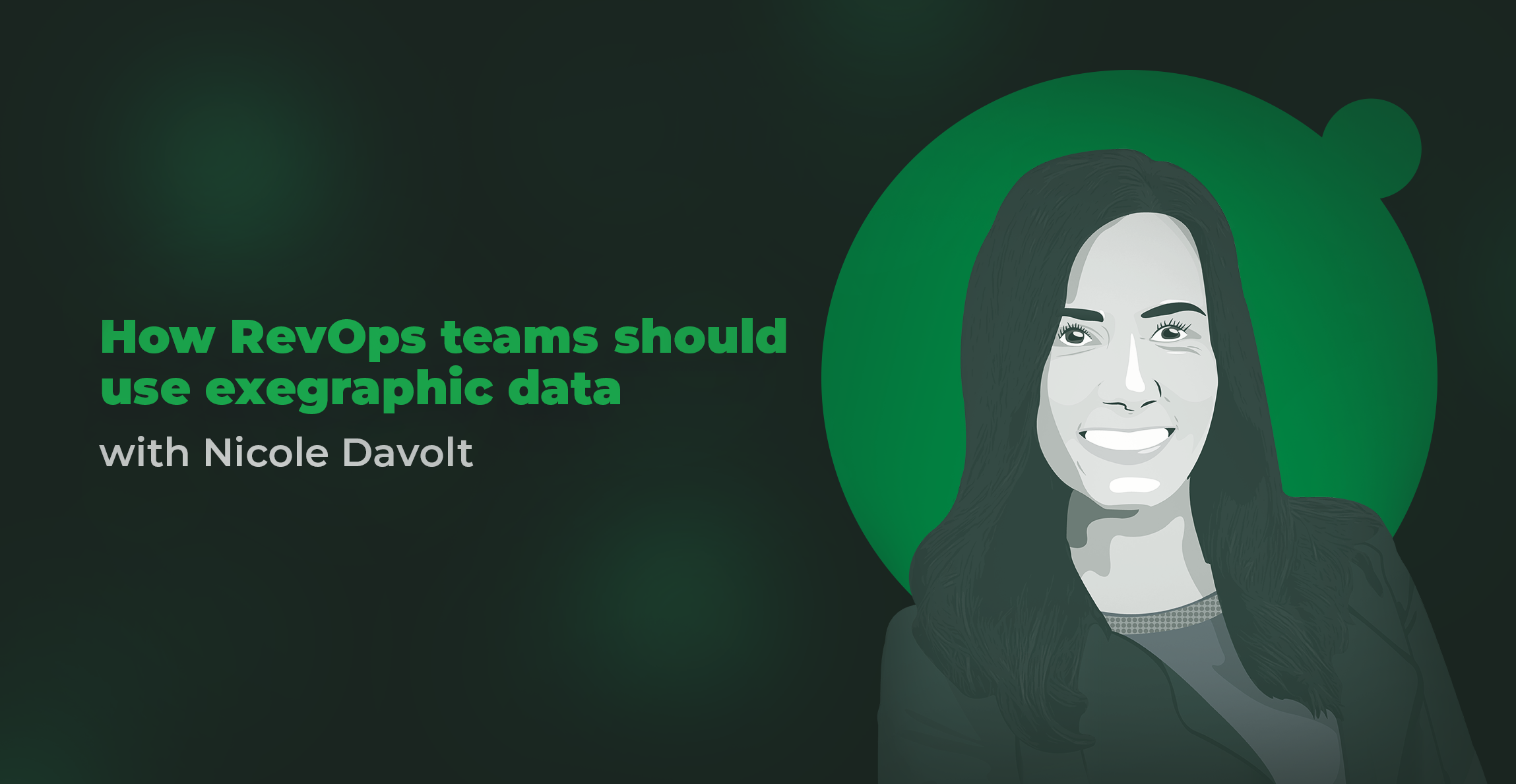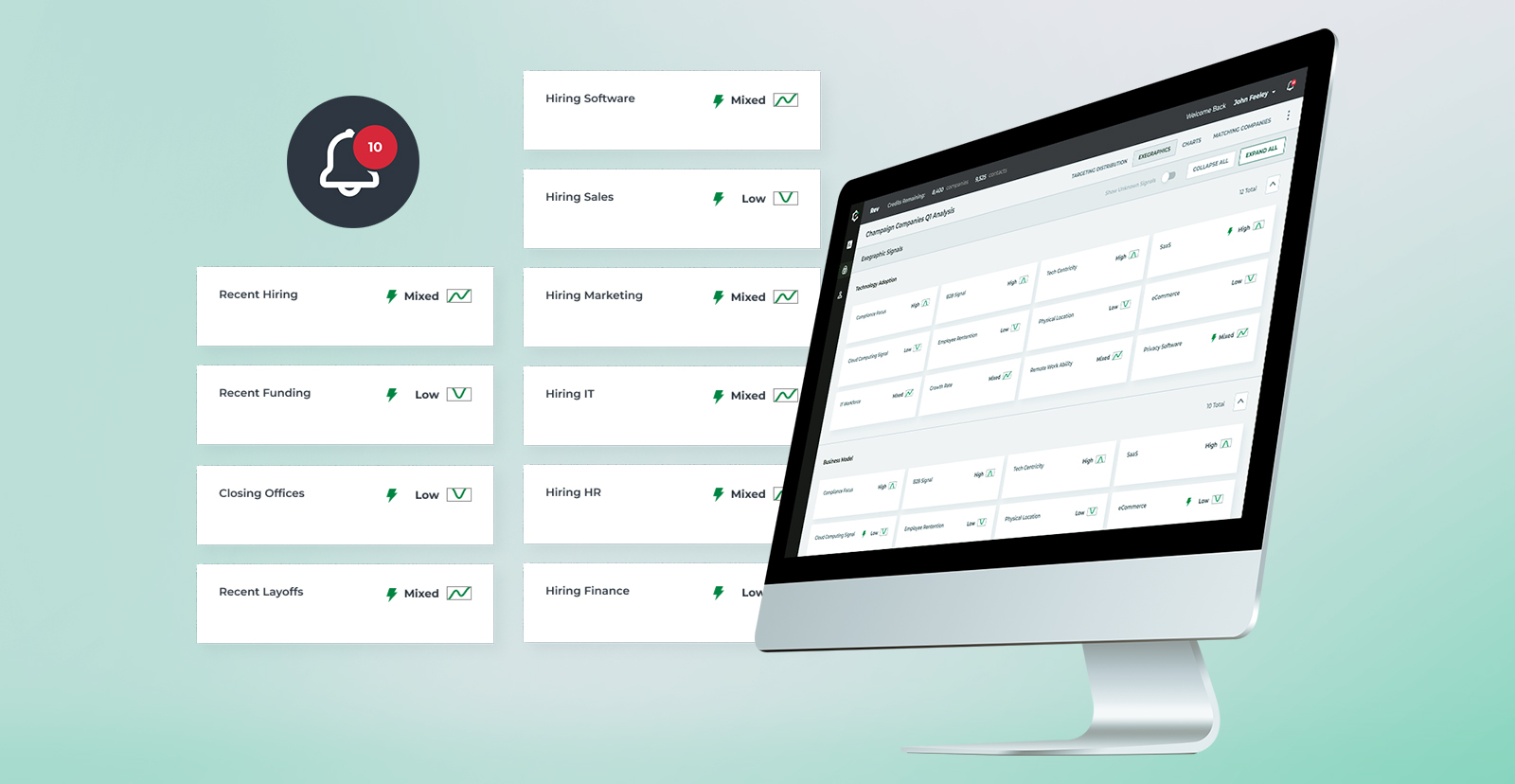Sales articles
< Back to blog
Win/Loss analysis: How to learn from lost sales opportunities
RevOps Sales
November 8, 2023
Trending articles
How to better understand your customers’ needs (without the limitations of traditional customer data)
DemandGen RevOps Sales
November 1, 2023
Want to understand your customers better than—and before—anyone else? Develop a deep understanding of their needs and pain points? Predict what factors influence them to buy before they even speak to one of your sales reps? Well, we hate to […]
Up your cross-sell game, with Zendesk’s Norman Gennaro
Sales
October 11, 2023
We see a common mentality around the cross-sell motion that it is the lowest hanging fruit possible in sales. Norman Gennaro, Zendesk’s President of Global Sales & Field Operations, says nope. “I think a lot of people underestimate how hard […]
How to build the best sales tech stack for your business
Sales
September 27, 2023
Need help building the perfect sales tech stack so you can easily hit your revenue targets? We understand! We also understand that this isn’t always the most straightforward task. There are hundreds of options for sales tools, and it can […]
Customer expansion: Grow your bottom line with these AI-powered upsell and cross-sell strategies
Sales
September 13, 2023
Want to increase the lifetime value of your existing accounts with customer expansion (aka account expansion) strategies? Well, here are some questions you need to consider: How do you know if your customers are ready for cross-sells and upsells? When […]
7 sales pipeline stages: A breakdown
Sales
September 6, 2023
Every company needs an effective sales pipeline. It’s a non-negotiable. Properly managing your leads and prospects throughout their journey to becoming customers optimizes your resources, closes deals faster (and more often), and drives revenue growth. However, note that all businesses […]
7 sales enablement best practices to maintain revenue growth in 2023
Sales
August 30, 2023
Endless meetings. A disorganized sales process. Communication that lacks clarity. These are just a few common pain points for B2B organizations. And, amid a looming recession, it’s never been more critical to resolve these issues ASAP. That’s why sales enablement […]
Data integrity and revamping your ICP
DemandGen RevOps Sales
August 16, 2023
Every GTM motion in a RevOps organization has its own distinct function. Yet somehow, they’re supposed to collaborate darn near seamlessly. Data is the medium that facilitates that interdependence. It’s a common language that provides common context to everyone in […]
Sales prospecting ultimate guide: Tips, examples, techniques and templates
Sales
August 2, 2023
When it comes to sales prospecting, there is no magic formula. Yes, there are some key ingredients like patience, persistence, persuasion and hard work. But, at the end of the day, prospecting is a skill. That said, there are certain […]
5 strategies to effectively sell software to enterprises
Sales
July 19, 2023
Selling software to enterprises? Good luck! Enterprise sales are tough–even for the most seasoned sales professional. You’ve got to navigate complex decision-making processes, deal with a lot of red tape and bureaucracy, and build strong relationships with key decision-makers. But […]
6 tips to optimize lead handoff between marketing and sales
DemandGen Sales
July 12, 2023
You have one hour. Yes, just one hour to follow up with leads and secure the best chance of speaking to key decision-makers and converting them into customers—at least, that’s what a study from the Harvard Business Review found. Of […]
9 steps to craft your perfect go-to-market strategy
DemandGen RevOps Sales
July 5, 2023
A well defined go-to-market strategy is the difference between a successful launch and a flop. It outlines your product’s target market, customers, channels, pricing and more—and makes sure that all teams are aligned and working together. Creating and perfecting a […]
Lead generation vs. sales prospecting: Key differences, examples and strategies
DemandGen Sales
June 21, 2023
They’re not the same. But you’re not wrong for thinking that the goals of lead generation and sales prospecting sound similar. While both strategies aim to generate new customers, lead generation focuses on generating large volumes of leads, while sales […]
8 outbound prospecting tips to help you crush your sales goals
Sales
June 7, 2023
Your cold email just arrived in your prospect’s inbox. But will your prospect open, read and respond to you? Here’s what the data says: probably not. And that’s because cold emailing, a form of outbound prospecting, is notoriously difficult and […]
8 actually helpful ways for SDRs to navigate this sales environment
Sales
May 24, 2023
Right now, Sales teams continue to face one of the toughest sales environments in memory. We may not technically be in a recession, but for years now, companies have been tightening their belts against spending that’s anything less than a […]
How (and why) RevOps teams use exegraphic data, with Intelligent Demand’s Nicole Davolt
DemandGen RevOps Sales
May 17, 2023
RevOps teams are under enormous pressure to grow their companies, and to grow them efficiently. Even C-suites are feeling this pressure. When they do, they turn to Nicole Davolt, a RevOps strategist at Intelligent Demand. “We align their tactics, their […]
It’s time to improve your aim
DemandGen RevOps Sales
May 3, 2023
Most revenue teams have more prospects in their CRM than they can handle. The problem, frankly, is not building up contact lists—the problem is maximizing the pipeline to identify the best prospects and engage them effectively. The sub-par prospects that […]
How to win with multi-level selling, with Pegasystems’ Judy Buchholz
Sales
April 26, 2023
Multi-level selling creates more direct conversations at all relevant levels of your prospects’ org charts. It’s clearly a solid strategy—but one that you do not want to implement cold. “It all starts with a strategy,” says Judy Buchholz, SVP of […]
What is sales prospecting? (Definition, techniques and video examples)
Sales
April 19, 2023
You’re wrong if you thought sales prospecting and lead generation were the same things. While they are related, sales prospecting is a more focused and targeted process that involves finding potential customers who may be interested in your offer. Lead […]
So you think you’ve exhausted your market?
DemandGen RevOps Sales
April 5, 2023
With the economy lagging and experts forecasting possible recessions, forward-thinking companies are looking to stimulate new revenue in new markets. In a vacuum, not a bad strategy. But many companies doing so are leaving money on the table in their […]
MQL vs. SQL: What’s the real difference?
DemandGen Sales
March 29, 2023
Marketing and sales teams use a lot of acronyms, and we throw them around like everyone knows what they mean. Most people in the field quickly catch on and come to understand the words associated with the acronym, but often […]
What chatbots teach revenue teams about using AI
DemandGen RevOps Sales
March 2, 2023
AI has reached a tipping point in accessibility and proficiency, and Sales and Marketing teams are suddenly engaging with AI in new ways—many for the first time. They’re using ChatGPT, for instance, to write their B2B prospecting emails, personalization and […]
Layering exegraphics and intent data to up your game (and your returns)
DemandGen RevOps Sales
February 28, 2023
RevOps teams are justifiably driven to incorporate intent data in their prioritization strategies. Which makes perfect sense: In the world of demand gen and cold outreach, a prospect who has voluntarily expressed interest in a solution your company offers is […]
Stay informed of critical events among your best prospects, with EV lenses
RevOps Sales
January 26, 2023
Reaching out to a prime prospect at a critical moment in their company’s journey—and before the competition does—could be the difference between a closed-won and closed-lost. You know that, and we know that. So, we decided to give you the […]
Level up your lead follow-up: 11 best practices
Sales
December 28, 2022
Congratulations! Your hard work paid off. You successfully generated leads from your marketing efforts. Now it’s time to convert those leads into customers. But, it’s not as simple as just picking up the phone and calling them all. Meaningful lead […]
Finishing the sales year strong, with sales guru James Buckley
Sales
December 15, 2022
For most companies, Q4 is the largest forecasted quarter of the year. It’s also a short quarter—not only because it’s cut short by the holidays, but because sales teams often stare down the business end of unmet quotas and unclosed […]
Inbound vs. outbound sales: What, when and how
DemandGen Sales
November 15, 2022
We studied the best marketing and sales minds and distilled them to a simple conclusion: “Every sales strategy can be categorized into two buckets; inbound or outbound, and neither is the better way to sell.” In fact, both are great […]
Grow and improve pipeline health in economic hard times
RevOps Sales
October 24, 2022
Revenue growth is easier during economic boons—just ask anyone from the .com bubble. It’s how companies maintain themselves during economic hard times that defines their sustainability. And more than just maintaining, downturns can actually be revenue growth opportunities for forward-thinking […]
Your ICP is broken, and here’s why
DemandGen RevOps Sales
September 22, 2022
Ideal customer profiles are a staple of B2B sales strategy. And they make sense: if you can identify the traits that make your best customers your best customers, you can target the same traits in your best prospects. The problem […]
B2B sales funnel: Understand and optimize what matters most
RevOps Sales
August 11, 2022
A recent Gartner study noted that the B2B purchasing process is complex. While that might not totally take you back, you might be surprised to learn that 77% of B2B buyers reported that their last purchase was complicated. So, let’s […]
Why your cold outreach sucks (and what to do about it)
Sales
July 27, 2022
Cold sales outreach catches a bad rap for good reasons. A lot of people don’t enjoy receiving cold calls and sales pitch emails. Plus, a lot of sales reps aren’t particularly genuine about making those connections. We find that a […]
What are exegraphics?
DemandGen RevOps Sales
July 22, 2022
Straight up, the B2B world does not get measured and tracked the same as the B2C world. Years ago, consumer sales vendors used to track just demographics. Today, they know a ridiculous amount beyond your age, your gender or your […]
12 steps to build and lead a high-performing SDR team
Sales
July 13, 2022
Leading a sales development team is a big undertaking. Many of the folks on your team are likely new to the role and junior in their careers. Their day-to-day is a grind: researching for new prospects that match your ideal […]
AI in sales: How to get started
Sales
June 30, 2022
Sales can be time-intensive, even if you love closing deals. Many aspects of the process can feel mundane, especially the tedious, repetitive tasks that feel like one more obstacle standing between you and your next closed won. But, you also […]
The problem with B2B data (and the solution your team is waiting for)
DemandGen RevOps Sales
June 15, 2022
B2B buying behavior involves multiple stakeholders, evolving buying criteria and an elongated consideration cycle. The sales and marketing tech stack only increases this complexity, so it seems counterintuitive to say B2B companies need another source of data to add to […]
10 ways to improve SDR pipeline and productivity
Sales
June 9, 2022
Business growth depends on consistent sales and, even before that, strong SDR pipeline and processes. Companies literally depend on SDRs—often junior members of the sales team—to find, reach out to, qualify and push new leads into the sales funnel so […]
Where to invest to solve sales and marketing misalignment
DemandGen RevOps Sales
June 4, 2022
Good news first: Advancements in B2B sales have a catalytic effect on humanity. Who would’ve thought? Improving the ability of buyers and sellers of complex solutions to find each other more efficiently makes the world a better place. Whether your […]
Right target, right time, now what? 7 steps to close the deal.
Sales
May 20, 2022
Chasing the wrong account is about as effective as chasing your own tail. Thankfully, with Rev, you’re tapping into the power of artificial intelligence and proven algorithms to identify and build target lists of accounts that look and act like […]
How to use psychological pricing in B2B sales
Sales
May 10, 2022
When it comes to the psychology of pricing products or services, what you don’t know might be impacting your B2B revenue. Experts talk about the characteristics of a fantastic B2B sales team or how to recruit the best sales reps. […]
Is the Challenger Sales model right for you?
Sales
May 10, 2022
There are many different types of selling methodologies: the Challenger Sale, SPIN Selling, Conceptual Selling, SNAP Selling, Sandler Sales and Customer-Centric Selling—to name a few. While each has its benefits and challenges, each style has something to offer B2B sales […]









































